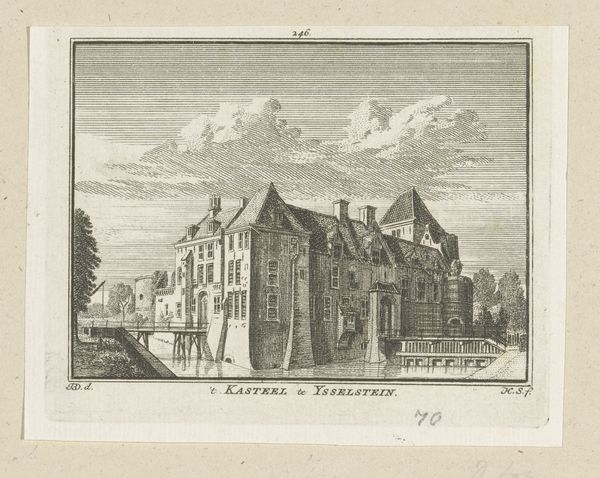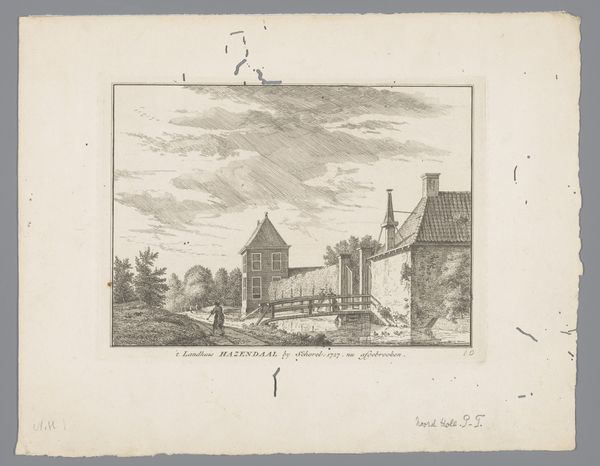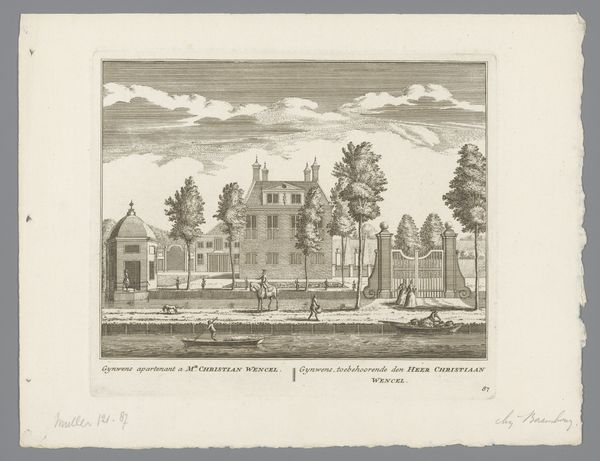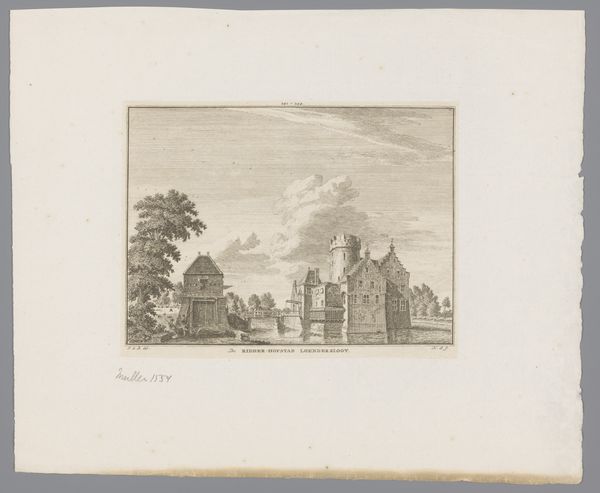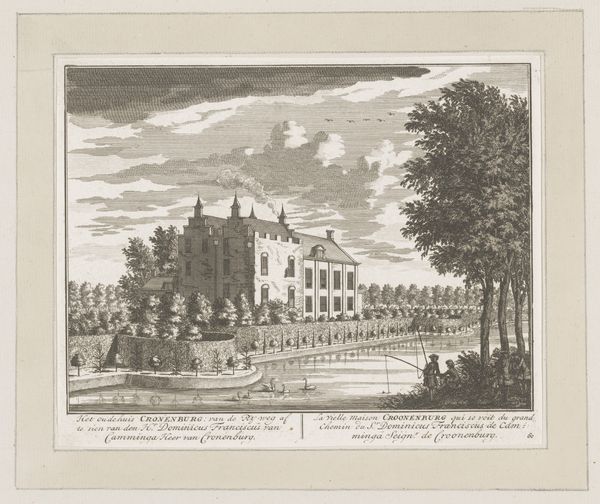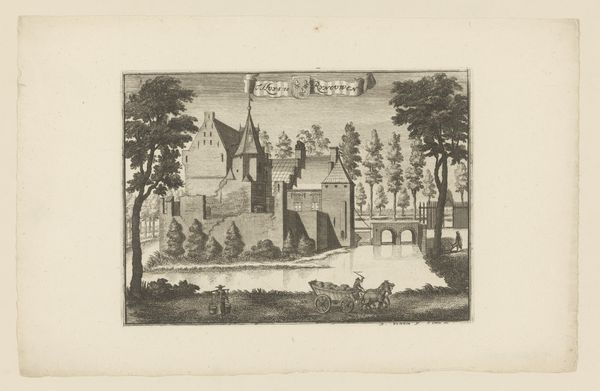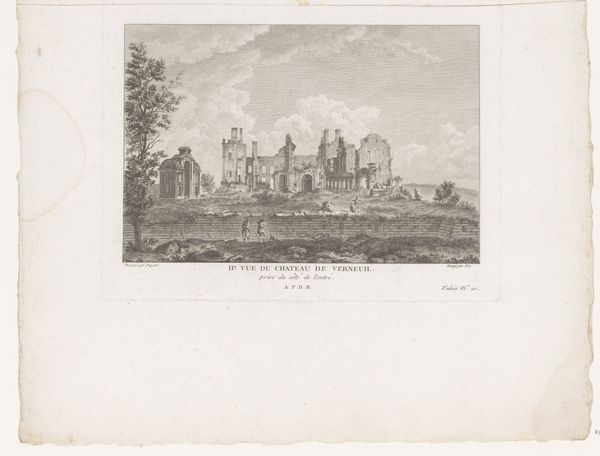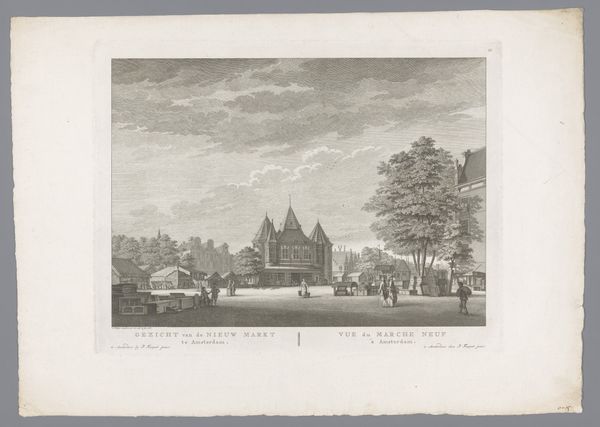
print, etching, engraving
#
aged paper
#
toned paper
#
light pencil work
#
baroque
#
dutch-golden-age
#
parchment
# print
#
etching
#
old engraving style
#
sketch book
#
landscape
#
house
#
personal sketchbook
#
sketchbook drawing
#
cityscape
#
storyboard and sketchbook work
#
sketchbook art
#
engraving
Dimensions: height 195 mm, width 214 mm
Copyright: Rijks Museum: Open Domain
Curator: This etching, titled "Gezicht op de ruïne van Kasteel Waardenburg" ("View of the ruin of Waardenburg Castle") was created in 1711 by Jacobus Schijnvoet. It captures a landscape dominated by the skeletal remains of a once-grand structure. Editor: There's something profoundly melancholy about this scene. The stark lines of the etching against the aged paper create a feeling of inevitable decay and loss of power. It's a very subtle but pervasive feeling. Curator: Ruin imagery was very popular, a kind of *memento mori*, but also a commentary on the rise and fall of secular power and shifting political landscapes. The castle's deterioration could symbolize not just the transience of life but also the decline of aristocratic power in the face of the growing merchant class in the Dutch Golden Age. Editor: It's intriguing how the presence of those two figures almost feels complicit in the scene. Their posture and the castle’s damage, which suggests conflict and political instability, raise questions about who benefits from this ruin and who is left to pick up the pieces. Are they witnessing or enacting some social and political shift? Curator: That’s a fascinating observation. Notice how Schijnvoet contrasts the broken walls with meticulously rendered details like the decorative inscription and even the tiny birds flocking above. This tension between ruin and meticulous representation asks us to reconcile memory and reality. We find the visual metaphor of an incomplete cultural record with the details still sharply visible. Editor: And the way the landscape is depicted —not heroic, or grand—but almost indifferent, even pastoral, intensifies the unsettling feeling. It implies the normalization of such decline within everyday life, doesn't it? That historical traumas become landscape? Curator: Exactly. I believe, as an iconographer, that Schijnvoet wasn't merely depicting a landscape but using the image of the ruin as a potent symbol of change, remembrance, and the inevitable passing of time. The enduring image, skillfully wrought, makes the memory visceral. Editor: Well, it has certainly opened my eyes to the interwoven themes of decline, legacy, and the sociopolitical backdrop to the ruin. An important message about cycles and societal shift, indeed.
Comments
No comments
Be the first to comment and join the conversation on the ultimate creative platform.
